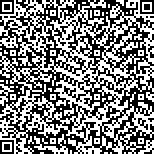| 摘要: |
|
| 关键词: |
| DOI: |
| 分类号: |
| 基金项目: |
|
| THE INTRODUCTION OF THE JAPANESE SCALLOP, PATINOPECTEN YESSOENSIS(JAY), INTO CHINA, ITS SPAT-REARING AND EXPERIMENTAL CULTIVATION |
|
|
| Abstract: |
| Parent scallops were transferred from Hokkaido, Japan in early September, 1981. Spawning took place on April 8 in indoor water with temperature at 9.4-10.6℃. Eyed larva appeared on the 23rd or 25th days, at which time the shell-length of the larva population averaged 190-210℃. Collectors woven with palm string were put into the rearing tanks on about the 30th day after fertilization when the eyed larva increased to about 30%. Results of experiments showed that scallop larvae fed with Pyramimonas were better than those fed with Platymonas or Phaeodactylum. For experimental culture, some spats were transferred to Chefoo Bay, Yantai and another to a coastal water area in Rongcheng on July 7, 1982. The water temperature of the latter was no higher than 23℃ at the 6 M culture layer. At the end of December, the mean shell height of the scallops was 37 mm and reached to 50.6 mm in early June, with the biggest being 60 mm. The water temperature in Chefoo Bay gets no higher than 24℃ at the 6 M culture layer in summer. At the end of May the next year, the shell height reached 39 mm with the biggest being 70 mm. The water temperature off Cape Taiping, Qi-ngdao, rose to 25.5℃ (1981) or 26.5℃ (1982) at the 2 M culture layer in summer. Scallops cultured there grew just as well in winter although some of them died in summer. |
| Key words: |
